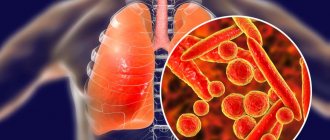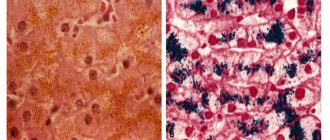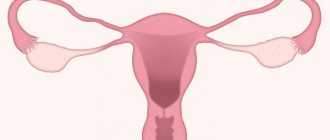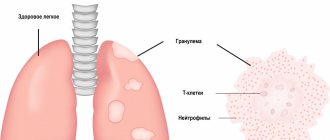Pneumonia in children is a fairly common disease, especially at a young age when the immune system is not yet fully developed. This is a lung infection caused by bacteria, fungi or viruses. It is important to carry out proper infection prevention and be attentive to the first symptoms of the disease that occur in young children. Currently, there is a highly effective treatment for pneumonia, but despite this, serious and dangerous complications are possible.
Bacterial pneumonia is characterized by a sudden onset with fever, respiratory distress, chest pain and deterioration in general condition. Symptoms vary depending on the patient's age. Among respiratory diseases, pneumonia is the leading single cause of childhood mortality worldwide, killing approximately 1.1 million patients before the age of 5 years.
Classification of pneumonia
Types of pneumonia are classified according to the cause. The type of microorganism involved, the location where the child was infected, and how the infection occurred are taken into account. According to the conditions of infection, hospital-acquired (nosocomial), intrauterine and community-acquired pneumonia in children is distinguished. The most common type of disease is the latter, which develops at home mainly against the background of ARVI.
Types of pneumonia in children according to the classification used in clinical practice:
· Focal.
The focus of infiltration has a diameter of 0.5 to 1 cm. Individual areas of infiltration can merge, which leads to the formation of a large focus.
· Segmental.
An entire segment of the lung may be involved in the inflammatory process. It is protracted and often complicated by fibrosis or deforming bronchitis.
· Croupous.
It is characterized by a hyperergic inflammatory process that affects the pleural area.
· Interstitial.
Accompanied by proliferation and infiltration of connective tissue. Develops when affected by fungi, viruses and pneumocystis.
According to the severity of the disease, complicated and uncomplicated pneumonia are distinguished. When complications develop, pulmonary edema, pulmonary insufficiency, pleurisy or abscess are observed. Cardiovascular disorders cannot be excluded.
Along the way, protracted and acute pneumonia in children are distinguished. In the second case, the disease resolves within 4-6 weeks. In a prolonged form, the inflammatory process persists for more than one and a half months. According to etiology, fungal, bacterial, viral and parasitic pneumonia are distinguished.
The clinical classification of childhood pneumonia is important for doctors, because, knowing the place and time of infection of the child, it is possible to determine the form of the pathogen that caused the pneumonia and, accordingly, prescribe effective treatment.
Causes of the disease
Doctors distinguish several basic types of pneumonia, each of which has different causes:
- viral – provoked by a viral infection that enters the body;
- bacterial – the root cause of the disease is bacteria of the upper respiratory tract, most often streptococcal;
- aspiration - caused by a foreign body that enters the lungs and provokes the development of inflammation (for example, a piece of food or uncontrolled vomit);
- fungal - develops against the background of lung infection by a fungus.
There are other varieties, but they are much less common. In most patients, the disease is caused by viruses. Most often, this disease occurs in winter, when, against the background of seasonal diseases, excess mucus forms in the lungs, which thickens, does not prevent air from entering the lung structures, and provokes the sedimentation of bacteria and further inflammation.
It is impossible to determine on your own, without medical help, the cause of the disease and its type. Therefore, before treating pneumonia at home, it is necessary to undergo appropriate tests that will allow the doctor to determine an adequate treatment regimen.
Treatment of pneumonia in children
There are several treatment methods for pneumonia that are aimed at relieving symptoms and neutralizing the existing infection. In case of bilateral pneumonia in children, urgent hospitalization in a hospital is recommended, and in severe cases - in the intensive care unit.
To treat pneumonia in children, the following is carried out:
· elimination of infectious and inflammatory process in the lungs;
· detoxification of the body;
· elimination of respiratory failure.
Etiological treatment is carried out immediately after admission to the hospital, after taking samples of biomaterial for bacteriological examination.
Today, for the treatment of pneumonia in children, it has been decided to use step-by-step antibacterial therapy:
To improve the condition, antibiotics are prescribed parenterally (intravenously, intramuscularly), then orally;
· detoxification is carried out by drip parenteral crystalloids, glucose-physiological solution, diuretics;
· if necessary, oxygen therapy is prescribed to correct the composition of gas in the blood (in case of respiratory alkalosis), and in severe cases, it is connected to a mechanical ventilation device;
· to improve the outflow of mucus from the lungs, bronchodilators are prescribed;
· For persistent dry cough, antitussives are prescribed.
After normalizing body temperature, it is recommended to conduct a course of massage, physiotherapeutic procedures, and therapeutic exercises.
Even when the likelihood of a bacterial infection is high, it takes time to identify the bacteria involved and choose the best antibiotic to eliminate it. For viral pneumonia, specific antiviral drugs can be used. If the causative agent is a fungus, then the doctor prescribes antifungal drugs. To increase the effectiveness of treatment, your doctor may recommend using a nebulizer.
At-risk groups
Bilateral pneumonia often develops as a complication of infectious diseases of the nasopharynx, chronic bronchitis, congenital lung defects, bronchial asthma, a state of exhaustion, and prolonged need for bed rest.
Patients of any age can develop bilateral pneumonia. The high-risk group includes people over 50 years of age and children under 5 years of age. The disease is severe in long-term smokers, people with heart disease, chronic pathologies, weakened immunity, and alcohol addiction.
Up to 9% of cases of acute bilateral pneumonia are fatal. The majority of deceased patients are people from the risk group.
In severe cases, the disease can become protracted and chronic, causing complications in the heart and other organs.
To prevent pneumonia, it is important for patients at risk to monitor their condition, maintain the functioning of the immune system, and give up bad habits.
Prognosis and prevention
The best treatment for pneumonia is prevention. Vaccines are available for children from two months of age. It is important to take care of the diet of a patient with pneumonia. During treatment, rest, bed rest and plenty of fluids are recommended to prevent dehydration of the baby's body after the formation of a large amount of mucus and due to increased sweating.
Typically, at the onset of the disease, children experience loss of appetite, but as they recover, it returns to normal. A healthy and nutritious diet is recommended to avoid nutritional deficiencies that can lead to other disorders in the body.
It is necessary to control the environment in which the patient is located, whether in a medical facility or at home. Avoid the presence of smoke (such as tobacco) or other lung irritants that may aggravate the condition.
After discharge from the hospital, children require clinical observation and rehabilitation measures. It is also recommended to strictly follow the doctor’s recommendations after recovery, correct daily routine, and moderate intake of vitamins as a preventive measure. Dosed physical activity contributes to the overall recovery of children and can prevent recurrence of pneumonia.
Complications
As we have already mentioned, pneumonia is dangerous due to its complications, so treatment regimens for the disease in adults at home using folk remedies are not only ineffective, but can also be life-threatening for the patient. Conventionally, complications caused by tissue inflammation can be divided into two groups: pulmonary and extrapulmonary.
Pulmonary complications affect the respiratory system and include:
- acute respiratory failure;
- pleural empyema;
- gangrene or lung abscess;
- parapneumonic pleurisy;
- respiratory distress syndrome.
Extrapulmonary complications include disorders that occur outside the respiratory system:
- myocarditis;
- septic shock;
- meningitis;
- failure of internal organs and systems;
- DIC syndrome.
Pneumonia in children - treatment at the RebenOK clinic in Moscow
Our medical center employs pediatricians who have extensive practical experience. Treatment of pneumonia in children is carried out after confirming the diagnosis and determining the type of pathogen, which allows you to get a quick result. Competent specialists determine the symptoms of latent pneumonia in children, which occurs without fever and wheezing.
If signs of a cold appear, it is recommended to consult a pediatrician to rule out the presence of pneumonia or prevent the development of the disease. We use modern diagnostic equipment and prescribe treatment in accordance with international protocols, taking into account the individual characteristics of the patient.
Literature:
1. Erzhanova G.E. Pneumonia in children // Bulletin of the Kazakh National Medical Institute, 2014. URL: https://cyberleninka.ru/article/n/pnevmonii-u-detey (access date: 09/02/2021)
2. Sergeeva E.V., Petrova S.I. Community-acquired pneumonia in children. Modern features // Pediatrician Magazine, 2021. URL: https://cyberleninka.ru/article/n/vnebolnichnaya-pnevmoniya-u-detey-sovremennye-osobennosti (access date: 09/02/2021)
3. Geppe N.A., Kozlova L.V., Kondurina E.G. Community-acquired pneumonia in children // Clinical manual "Moscow Society of Children's Doctors", 2021. URL: https://pulmodeti.ru/wp-content/uploads/Vnebolnichnaya.pdf (access date: 09/02/2021)
4. Petchenko A.I., Luchaninova V.N., Knysh S.V.
Age-related features of the course of community-acquired pneumonia in children // Journal “Fundamental Research” No. 2, 2014. URL: https://fundamental-research.ru/ru/article/view?id=33563 (access date: 09/02/2021) 5. Kakeeva A.A., Bokonbaeva S.D., Dzhanabilova G.A. Etiological structure of community-acquired pneumonia in young children // Journal “Modern Problems of Science and Education” No. 3, 2021. URL: https://science-education.ru/ru/article/view?id=30897 (access date: 02.09. 2021)
Symptoms of pneumonia
The first sign of pneumonia is a sharp rise in body temperature, which can exceed 38 degrees. Against the background of elevated temperature, general signs of intoxication of the body develop: weakness, fatigue, headache, drowsiness, body aches, pain in the muscles.
After a few days, a dry cough in paroxysmal form is added to the general symptoms. Over time, sputum begins to disappear. Shortness of breath, chest pain and wheezing in adults are serious symptoms of worsening pneumonia and indicate that further treatment at home may be dangerous.
The listed signs are general, and the speed of their development and worsening depends on the specific type of disease. For example, if the inflammation is caused by a virus, the symptoms increase quickly, and the patient’s well-being worsens in just a few hours. With the bacterial form, symptoms, on the contrary, develop gradually, and cough may appear only two weeks after the first signs.
Diagnostics
Before treating pneumonia in adults at home or in a hospital, it is necessary to undergo an examination that will help establish a diagnosis, identify the causative agent, clarify the presence of complications and the severity of the pathology. Only after this can the most effective treatment regimen be determined.
The medical diagnostic algorithm for suspected development of pneumonia consists of the following main stages:
- collection and analysis of patient complaints;
- physical examination (measurement of saturation, body temperature, respiratory rate and pulse, listening to the lungs for wheezing);
- laboratory blood tests to confirm the presence of infection, inflammation, as well as sputum analysis to identify causative microorganisms;
- instrumental tests (x-ray or computed tomography, if there is fluid in the pleural cavity - puncture).
Even if the patient’s condition allows for treatment of pneumonia at home, the doctor can give recommendations on taking medications only after receiving diagnostic results.









